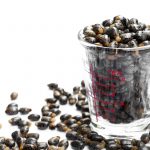Epidemics & Pandemics – Homeopathic Prevention & Management – Part 1
SHARUM SHARIF, ND
I had the honor of giving a talk on the subject of homeopathic prevention and treatment of epidemics and pandemics at the annual AANP convention in August of 2019, only a few months prior to the onset of COVID-19. This 2-part article is a non-technical and simplified version of my AANP presentation, along with some homeopathic discussion relevant to COVID-19. You can read the PowerPoint of my talk and/or watch its video presentation on my website: DrSharif.com.
In Part 1 of this article, I will address the following: First, how and why epidemics are on the rise. Second, how conventional medical approaches by themselves (including drugs and vaccination) are not sufficient in meeting the needs of our species. Third, how we desperately need an alternative solution. And, fourth, how we need a solution (namely homeopathy) that has passed the test of time – a solid solution with a high degree of reliability during the present and upcoming epidemics. In Part 2, I will get into more specifics of homeopathic management of epidemics and pandemics, including COVID-19.
Rising Incidence & Threat to Humanity
An epidemic is the widespread occurrence of an infectious disease in a community at a particular time. In contrast, a pandemic is prevalent throughout a whole country or the world. True epidemics are acute infectious diseases that are usually febrile and result in either recovery or a rapid decline leading to death.
Epidemic diseases are killing countless people on our planet every single day. For instance, in the 15 minutes you might take to read this article, 30 children will die of malaria alone (1 child dies of malaria every 30 seconds), not to mention many other epidemics presently afflicting the Earth. Nearly 1 million people die of malaria yearly.1 This is the equivalent of the population of children in 5 average-size US public schools dying each and every day! And this staggering statistic only applies to a single disease, malaria.
Epidemics, in general, are on the rise, and may well be one of the leading threats to our survival as a species over the coming years. The biggest killers in history have been epidemic diseases, which is why we need to prepare ourselves for them. In 2019, the World Health Organization (WHO) identified several global high-threat pathogens, including “Zika, Nipah, … MERS-CoV, … SARS, and disease X [representing] an unknown pathogen that could case a serious epidemic.”2 Months later, that unknown pathogen appeared as SARS-CoV-2; in February 2020, the WHO declared coronavirus a global health emergency.3 Some epidemics, such as smallpox, spread quickly, while others, such as HIV/AIDS, spread more slowly.
Unfortunately, conventional medical treatments and preventatives (including drugs and vaccines) are proving less and less effective. Tuberculosis (TB), for example takes more lives each year than any other human disease, including malaria, the plague, the flu, HIV, cholera, etc.4 Approximately one-third of the world’s population is infected with TB, with less than half of all cases ever diagnosed.5 We now have multiple drug-resistant (MDR) TB, as well as extreme drug-resistant (XDR) TB, which responds to nothing (ie, conventional treatments) and is extremely aggressive. Malaria – another major killer, second only to TB6 – is unfortunately on the rise, and now there is a highly resistant form of malaria spreading rapidly in Southeast Asia.7 Even more concerning is that one-half of the world’s population is exposed to malaria.8 The worldwide incidence of dengue fever has risen 30-fold in the past 50 years,9 and, according to Mayo Clinic, “No specific treatment for dengue fever exists.”10 Before 1970, only 9 countries had experienced severe dengue epidemics. Today, the disease is endemic in more than 100 countries.11 Tick-borne diseases (such as Lyme disease) are also on the rise. According to Centers for Disease Control and Prevention (CDC), over the past 2 decades 7 new tick-borne diseases have appeared in the United States.12 You probably know how challenging the treatment of these tick-borne diseases can be. On another note, you have probably heard of a mysterious fungal infection that is spreading throughout the world and has a mortality rate of 50%.13 This fungus, called Candida auris, is often resistant to antifungal medications. My last example is typhoid fever, which is caused by Salmonella. Typhoid is now resistant to the last-resort antibiotic, colistimethate sodium.
According to the WHO, “Antibiotic resistance is one of the biggest threats to global health, food security, and development today. … A growing number of infections – such as pneumonia, tuberculosis, gonorrhea, and salmonellosis – are becoming harder to treat as the antibiotics used to treat them have become less effective.”14 Dr Margaret Chan of the WHO recently stated that Earth may be approaching a time “when things as common as strep throat or a child’s scratched knee could once again kill.”15 In an open letter from concerned physicians regarding antibiotic resistance (found at: https://tinyurl.com/y997t5bq), integrative medicine specialists stated, “Solutions to this looming crisis must be found, and found quickly. As some of America’s leading integrative medicine specialists, we believe it is time to look anew at a modality called homeopathic medicine [italics added].”16
Why the Rise?
Why are epidemics on the rise? Most people would think that a deadly germ is the force behind an epidemic/pandemic. However, the organism behind an epidemic does not by itself always explain why epidemics come and go, since sometimes – as is the case with the Plague – the epidemic ends, yet the organism persists. Why would this be? No one knows the exact reason. However, war, famine, and pestilence (ie, disease) usually go together. Some historians call these 3 entities “visitations.”17 Epidemics are also cyclical, appearing every so often, say, 100, 200, or 500 years. A Google search suggests that the main causes for the rise in epidemics are thought to include: an increase in global travel and urbanization, overpopulation, a rise in zoonosis (diseases that can be passed from animals to humans), an unfortunate increase in resistance to pharmaceutical drugs, global warming, and war.
Why would global warming, or climate change, contribute to epidemics? As the planet warms up, many pathogens begin spreading to new areas. For instance, epidemics such as dengue fever, which was never common in the Northern Hemisphere, now occurs much more frequently in these areas due to an apparent northern spread of mosquitoes that carry the virus that causes dengue fever. According to the WHO, “Mosquitoes are one of the deadliest animals in the world. … Zika, dengue, chikungunya, and yellow fever are all transmitted to humans by the Aedes aegypti mosquito. More than half of the world’s population live in areas where this mosquito species is present.”18 Furthermore, climate change can result in extreme weather patterns, including storms, floods, fires, tsunamis, hurricanes, and earthquakes. Epidemics seem to always come in the wake of these natural disasters (especially if combined with war). An example is the cholera outbreak following the earthquake in Haiti.
Another major reason for the rise in epidemics is wars. Wars and epidemics almost always go together. This is well documented throughout history. Examples: 1) The epidemic of WWI was the Spanish flu pandemic of 1918; 2) WHO experts say that violence is preventing the end of the Ebola outbreak19; 3) The war in Yemen over the last few years has resulted in poor sanitary conditions, causing a horrific cholera epidemic that infected 1.1 million people and killed 2310 in Yemen in 2017, alone.20
A recent WHO report on global surveillance of epidemic-prone infectious diseases included yellow fever, plague, cholera, meningococcal disease, dengue fever, influenza, African trypanosomiasis, HIV/AIDS, and leishmaniasis. Of these 9 conditions, 4 are viral (yellow fever, dengue fever, influenza, and HIV), 3 are bacterial (plague, cholera, and meningococcal disease), and 2 are parasitic (African trypanosomiasis and leishmaniasis). It is now recognized that viral diseases form the bulk of epidemic diseases.21 Note that malaria, TB, Ebola, Nipah virus, and Candida auris are not on this list, at least not yet! (Note: The top 2 biggest killers in history –TB and malaria – are not in this list yet, since they are not considered to be extremely volatile and out of control, at least not for now.)
Many epidemics involve broad common symptoms (such as fever, achiness, headache, and fatigue), which makes them difficult to diagnose. There are also lab testing challenges: Cultures are slow to grow, antibody detection may not directly predict infection, detection of bacterial DNA in blood samples (by PCR) is not widely available, etc. Misdiagnosis is also more likely to occur with overlapping diseases with similar clinical presentations. An example would be 2 concurrent diseases, such as dengue and leptospirosis in the tropics. Clearly, misdiagnosis can lead to incorrect selection of medical treatment, which can result in high mortality rates.
In conclusion, difficulties in diagnosis and treatment of an epidemic (with or without a coinfection) highlight a dire need for effective alternative methods of prevention and treatment.
Vaccines vs Homeopathy?
Although vaccines can effectively manage epidemics, they have limitations. For example, it’s impractical to vaccinate ourselves against hundreds or thousands of potentially pathogenic bugs, considering the constant emergence of new strains. And what if there are multiple epidemics going on simultaneously? Do we offer multiple vaccines at the same time? This could increase vaccine-related adverse effects. There is also insufficient funding for vaccines, including for TB, HIV, and malaria.22 To make matters worse, there are no vaccines available for some newly emerging diseases, such as the Nipah virus. In emergency situations, we cannot produce, distribute, and administer enough vaccines for large populations rapidly enough, even if funds were available. Yet one more problem with vaccines during epidemics is that acquiring immunity through their use can take a few weeks, leaving target populations vulnerable. Lastly, common deterrents to the use of vaccine include fear of injections, the hazards of using infected needles, and immunization of infants and pregnant women.
Why should we consider homeopathy during epidemics? Here are some reasons: They are highly effective and they work immediately. Basic prescribing is easy to learn. Giving instructions is easy. Correctly prescribed, they are very safe in all age categories; they are suitable for young and old alike. They are easy to administer. They have a long shelf-life. They are compact and light, and therefore easy to transport and distribute. They are inexpensive. They are legally transportable across international borders. Their nomenclature is standardized worldwide. You can take homeopathic remedies while on pharmaceutical medications, without fear of interactions. Since remedies aim to boost the immune system, genetic mutation of a pathogen will not be a deterrent in finding a correct homeopathic solution. In the case of epidemics where the culprit deadly organism cannot be identified, homeopathy can still offer preventive measures, as it relies on the signs and symptoms characteristic of the disease, not on the identification of the organism. And, finally, a shortage of remedies is never a concern with homeopathic remedies. One can “graft” them or dilute them in water, and they will still have a surprisingly powerful impact on the human body. Theoretically, as amazing as it sounds, 1 bottle of a remedy can be sufficient for an entire city during an epidemic! (Refer to my AANP presentation for more information on this subject.)
Can we offer both homeopathic remedies as well as vaccines for prevention and treatment of epidemics? Absolutely! Any form of homeopathic approach (be it the Genus Epidemicus or Homeoprophylaxis) can be a bridging device until effective vaccines are available for the disease in question.
Historical Evidence
Homeopathy has historically outshined other therapies during epidemics. In 1900, Thomas Lindsley Bradford, MD, edited a book called The Logic of Figures,23 in which he collected statistics comparing conventional therapeutics with homeopathic ones. In his 2001 article published in the Journal of the American Institute of Homeopathy, Todd Hoover, MD, states, “Homeopathic practice during massive epidemics throughout the world has been the gold standard for showing the efficacy of potentized remedies.”24 In June of 2017 in Germany, Andre Saine, ND, delivered a presentation titled “Homeopathy in Times of Epidemics: A Brief Overview,” based on an exhaustive search for over a decade. In it, Dr Saine shared some interesting facts/observations and made some noteworthy remarks, including the following:
Results obtained by homeopathy during epidemics consistently reveal an extremely low mortality rate, regardless of the physician, the time, the place or the type of disease, including the ones with very high mortality rates. … These reports deserve the close attention of academia, governments, and health authorities. … In homeopathy, we have literature that overflows with all types of case studies, trials, and outcome reports. Due to the fact that homeopathic philosophy has NOT changed since its development, results obtained by homeopathy from the past have not lost their value. … And, finally, there was no significant iatrogenesis (i.e., diseases caused by medications or doctors) ever reported under homeopathic treatment during epidemics.
Here are just a few historical statistics: Spanish flu killed an estimated 30-50 million victims. The fatality rate under homeopathic care was 0.7%, versus conventional medicine at 6%.25 Among pregnant woman with the flu and pneumonia, 1 out of 2 died under conventional care, versus 1 out of 135 under homeopathic care.26 During the Austrian cholera epidemic in the 1800s, the allopathic mortality rate was 66%, whereas the homeopathic mortality rate was 33%.27 “On account of this extraordinary result, the law interdicting the practice of Homeopathy in Austria was repealed,” reported Dr Wild, the editor of the Dublin Quarterly Journal of Medicine.27 On a separate note, the Prussian government made the use of Belladonna during scarlet fever epidemics obligatory in 1838.28 Lastly, Samuel Hahnemann, MD, the originator of homeopathy, treated 183 cases of typhus during the typhus epidemic in 1813, 182 of whom survived. This was one of the first epidemics where homeopathy proved itself, and was at a time when conventional treatment of typhus was linked to a mortality rate of over 30%.29
Despite well-documented and official reports, the results obtained by homeopaths during epidemics have been almost completely ignored by medical historians. Why? Thomas Bradford, MD, surmised that “most would rather not see the ineffectiveness of the conventional therapeutics nor accept the efficacy of homeopathy.”23
Present-Day Evidence
How about present-day evidence demonstrating the effectiveness of homeopathic remedies, in general, and specifically their effectiveness during epidemics? In 2017, Iris Bell, MD, PhD, and her colleagues catalogued over 6000 pieces of homeopathic research, including many randomized, double-blinded, controlled trials (RCTs). The American Institute of Homeopathy regularly updates a homeopathy research evidence base at: https://tinyurl.com/y7yvuuys.30 The National Center for Homeopathy’s website also has a very useful 1-page document titled, “Is There Research to Support Homeopathy?”31 This can be found at: https://tinyurl.com/y75scybx.
Numerous studies examining the effectiveness of homeopathy during epidemics can be found on PubMed.32-35 PubMed also has many citations on the subject of homeoprophylaxis (HP). Additionally, the National Center for Homeopathy offers a list of numerous records, studies, and trials on HP at: https://tinyurl.com/yb73py6b.36 One particularly informative article, by Isaac Golden, PhD, cites 26 homeopathic interventions in 3 countries: Brazil, Cuba, and India.37 According to Golden, over 90 million people on an annualized basis had been protected, with effectiveness ranging between 75% and 95%. Most of the interventions were directed by government agencies and undertaken by medical doctors and scientists employed by the agencies. Golden concluded, “Homeoprophylaxis can provide governments a very economical practical option to combat infectious diseases in both short and long-term disease outbreaks.”
In Part 2 of this article, I will discuss 1) how the world views homeopathy; 2) the concepts of Genus Epidemics and Homeoprophylaxis (or homeopathic vaccination); 3) dosing of homeopathic remedies during epidemics; and 4) the homeopathic management of COVID-19.
References:
- Unicef. The Reality of Malaria. Available at: https://www.unicef.org/media/files/MALARIAFACTSHEETAFRICA.pdf. Accessed July 14, 2020.
- World Health Organization. Ten threats to global health in 2019. 2020. WHO Web site. https://www.who.int/news-room/feature-stories/ten-threats-to-global-health-in-2019. Accessed July 14, 2020.
- Daher N. Last Week, the World Health Organization Declared Coronavirus a Global Health Emergency. What Does That Mean? February 5, 2020. Smithsonian Magazine. Available at: https://www.smithsonianmag.com/smart-news/last-week-world-health-organization-declared-coronavirus-global-health-emergency-what-does-mean-180974128/. Accessed July 15, 2020.
- National Institutes of Health. News Releases. NIH releases strategic plan to address tuberculosis research. September 26, 2018. NIH Web site. https://tinyurl.com/yy9nscfo. Accessed July 15, 2020.
- Glaziou P, Sismanidis C, Floyd K, Raviglione M. Global epidemiology of tuberculosis. Cold Spring Harb Perspect Med. 2014;5(2):a017798.
- BBC News. Malaria: a major global killer. October 18, 2011. BBC Web site. https://www.bbc.com/news/10520289. Accessed July 15, 2020.
- Hamilton WL, Amato R, van der Pluijm RW, et al. Evolution and expansion of multidrug-resistant malaria in southeast Asia: a genomic epidemiology study. Lancet Infect Dis. 2019;19(9):943-951.
- World Health Organization. Malaria. January 14, 2020. WHO Web site. https://www.who.int/news-room/fact-sheets/detail/malaria. Accessed July 15, 2020.
- World Health Organization. Dengue: a mosquito-borne disease. May 28, 2018. WHO Web site. https://www.who.int/bangladesh/news/detail/28-05-2018-dengue-a-mosquito-borne-disease. Accessed July 15, 2020.
- Mayo Clinic. Dengue fever. Last updated 2020. Available at: https://www.mayoclinic.org/diseases-conditions/dengue-fever/diagnosis-treatment/drc-20353084. Accessed July 16, 2020.
- World Health Organization. Dengue and severe dengue. March 2, 2020. WHO Web site. https://www.who.int/news-room/fact-sheets/detail/dengue-and-severe-dengue. Accessed July 16, 2020.
- Centers for Disease Control and Prevention. Lyme and Other Tickborne Diseases Increasing. Last reviewed April 22, 2019. CDC Web site. https://www.cdc.gov/media/dpk/diseases-and-conditions/lyme-disease/. Accessed July 16, 2020.
- Chest Physician. Candida auris: Dangerous and here to stay. April 18, 2019. Available at: https://www.mdedge.com/chestphysician/article/199107/critical-care/candida-auris-dangerous-and-here-stay. Accessed July 16, 2020.
- World Health Organization. Antibiotic resistance. February 5, 2018. WHO Web site. https://www.who.int/news-room/fact-sheets/detail/antibiotic-resistance. Accessed July 22, 2020.
- American Institute of Homeopathy. Letter From Concerned Physicians – Antibiotic Resistance. Available at: https://homeopathyusa.org/about-aih-2/position-statements-letters-2/letter-regarding-antibiotic-resistance.html. Accessed July 22, 2020.
- American Institute of Homeopathy. Letter From Concerned Physicians – Antibiotic Resistance. Last updated 2016. Available at: https://homeopathyusa.org/about-aih-2/position-statements-letters-2/letter-regarding-antibiotic-resistance.html. Accessed July 22, 2020.
- The Divine Visitations: Considered in a Sermon, Preached on the Fast-Day, February 20, 1805. London England: Collins & Co. Broad Street; 1805.
- World Health Organization. Mosquito-borne diseases. WHO Web site. https://www.who.int/neglected_diseases/vector_ecology/mosquito-borne-diseases/en/. Accessed July 22, 2020.
- World Health Organization. Ebola virus disease – Democratic Republic of the Congo. September 19, 2019. WHO Web site. https://www.who.int/csr/don/19-september-2019-ebola-drc/en/. Accessed July 22, 2020.
- ReliefWeb. OCHA. Yemen Humanitarian Update Covering 16 – 26 August 2018 | Issue 25. August 26, 2018. Available at: https://reliefweb.int/report/yemen/yemen-humanitarian-update-covering-16-26-august-2018-issue-25. Accessed July 22, 2020.
- Sarukhan A. The most feared pathogens: 9 diseases that could cause a major epidemic. February 9, 2016. ISGlobal. Available at: https://www.isglobal.org/en/healthisglobal/-/custom-blog-portlet/los-patogenos-mas-temidos-9-enfermedades-que-podrian-causar-una-gran-epidemia/3098670/0. Accessed July 22, 2020.
- Duke University. Global Health Institute. Research News. Effective TB, HIV and Malaria Vaccines Missing from Drug Development Pipeline. September 4, 2018. Available at: https://globalhealth.duke.edu/news/effective-tb-hiv-and-malaria-vaccines-missing-drug-development-pipeline-0. Accessed July 22, 2020.
- Bradford TL, ed. The Logic Of Figures Or Comparative Results Of Homeopathic And Other Treatments. Original publication: Boericke & Tafel; 1900.
- Hoover TA. Homeopathic prophylaxis: fact or fiction. J Am Inst Homeopath. 2001;94(3):168-175.
- Pearson WA. Epidemic Influenza Treated by Homeopathic Physicians. JAIH. 1919;XII(1):11-13.
- The Canadian Academy of Homeopathy. Debates. Q1. to Dr. André Saine from Dr. Steven Novella
- Casseday FF. Homeopathy and Health. Portland, OR: FF Casseday; 1914;2(2):31. Available at: https://tinyurl.com/yxglanqg. Accessed July 22, 2020.
- Schmukler A. Homeopathy: An A to Z Home Handbook. Woodbury, MN: Llewellyn Publications; 2006: 290.
- Vasold M. The epidemic typhus of 1813/14 in the area of lower Franconia. Wurzbg Medizinhist Mitt. 2004;23:217-232. [Article in German]
- American Institute of Homeopathy. Homeopathy Research Evidence Base: References. Last updated May 15, 2019. Available at: https://homeopathyusa.org/uploads/Homeopathy-Research-Evidence-Base-05-15-2019.pdf. Accessed July 22, 2020.
- National Center for Homeopathy. Is There Research to Support Homeopathy? Available at: https://www.homeopathycenter.org/sites/default/files/final_is_there_homeopathic_research.pdf. Accessed July 21, 2020.
- Bracho G, Varela E, Fernández R, et al. Large-scale application of highly-diluted bacteria for Leptospirosis epidemic control. Homeopathy. 2010;99(3):156-166.
- Jacobs J. Homeopathic Prevention and Management of Epidemic Diseases. Homeopathy. 2018;107(3):157-160.
- Bagai U, Walter NS. Antiplasmodial potential of homeopathic drugs Chelidonium and nosode against Plasmodium berghei infection. J Complement Integr Med. 2014;11(3):195-201.
- Rajan A, Bagai U. Antimalarial potential of China 30 and Chelidonium 30 in combination therapy against lethal rodent malaria parasite: Plasmodium berghei. J Complement Integr Med. 2013;10:/j/jcim.2013.10.issue-1/jcim-2012-0016/jcim-2012-0016.xml. Published 2013 May 7. doi:10.1515/jcim-2012-0016.
- National Center for Homeopathy. Homeoprophylaxis: Human Records, Studies and Trials. October 27, 2014. Available at: https://www.homeopathycenter.org/news/homeoprophylaxis-human-records-studies-and-trials. Accessed July 23, 2020.
- Golden I. Large Scale Homeoprophylaxis: Results of Brief and Long-Term Interventions. Homeoprophylaxis. American Journal of Homeopathic Medicine. Spring 2019. Available at: https://homeoprophylaxis.education/american-journal-of-homeopathic-medicine-isaac-golden-large-scale-homoeoprophylaxis-results-of-brief-and-long-term-interventions/. Accessed July 23, 2020.

Sharum Sharif, ND, is a 2003 graduate of Bastyr University. He has a primary-care practice in Kent, WA, and is an affiliate clinical faculty at Bastyr University. He gave a talk on the subject of “homeopathic prevention and treatment of epidemics and pandemics” at the 2019 AANP convention. (You can read the PowerPoint of his talk and/or watch its video presentation on his website: DrSharif.com.) Dr Sharif has authored a book on homeopathy titled Visual Homeopathy, and has an extensive website for teaching constitutional homeopathy: www.VisualHomeopathy.com.










